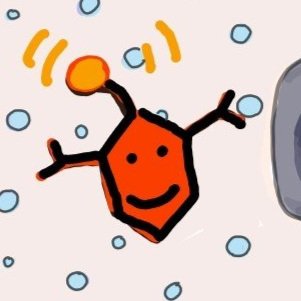DRAGONFLY nano-Columns, with integrated emitter
Dragonfly nano-columns:
The column: with a constant ID all along its length for best reproducibility.
The emitter: Sharp singularity (10μm LOTUS or Classic) optimized for the best performance and robustness.
The column and emitter are welded in vacuum, forming a solid monolithic assembly, with a well-defined column to emitter transition.
No Frit and no pulling, no weak points, and no column-to-column geometric variability.
Reproducible and Robust
Self-pack integrated columns-emitter available
Pre-packed columns-emitters coming soon
The Dragonfly columns are designed to improve geometrical repeatability of the flow-path, so as to improve data reproducibility:
How the Micro-skimmer junction* works:
The back of the emitter is mechanically sharpened, inserted in the column, and the assembly is welded in vacuum. The resulting junction is extremely robust and reproducible:
Self centering: the geometry is very reproducible, thanks to the conical column-emitter interface.
Mechanically strong: The internal forces are extremely low even under ultra high pressure because the internal exposes areas are micro-metric.
Frit-less: No frit is required because the beads form a ‘roman-bridge’ structure at the entrance of the emitter capillary. inverted cone at the inlet of the emitter acts like a skimmer, aiding the formation of the ‘roman-bridge’ and preventing clogging.
Less prone to clogging: Thanks to the constant ID of both the column and the emitter.
*PATENT pending technology
Sharp Singularity emitters integrated:
Improve the quality of your data with high quality columns and emitters:
The ionization efficiency depends on the size of the 1st generation nano-electrospray droplets, which is defined by the nano jet, which emerges from the electrospray meniscus, whose shape is determined by the emitter. To produce a stable signal, you need to produce a microscopic and stable meniscus. Having the right emitter is a good start. Understanding the physics of electrospray will help you get the best results. Here you can find some material to learn more:
CUSTOMER REVIEWS:
BC Cancer Research Centre (Canada) - Selfpack Dragonfly nano-Column with LOTUS emitter
“Overall, we are very happy with the performance of the LOTUS (Dragonfly) columns. They pack very easily and are extremely stable. This latter aspect is probably the best part about them, the tip performance never seems to degrade. Usually with self-pulled emitters, the tip performance will degrade after 100 injections or so in my experience. The first column I packed in the LOTUS emitter column lasted for over 1000 injections without a drop in performance (and this wasn't continuous usage either, it was uninstalled and reinstalled many times). The only reason I stopped using that one actually was it looked like the capillary around the column-emitter junction was starting to become a bit worn out and I was worried it was going to break, but the tip itself was still fine”.
Acoustica Bio (USA) - LOTUS emitters ref. 50-05 and 30-05.
“The emitters worked great! Congrats on your products – they are very well made.“
The Kennedy Group - University of Michigan (USA) - 20 μm ID with a flow rate of 250-750 nL/min.
"We use The Sharp Singularity nano-ESI emitters with our Q-Tof Premier Mass Spectrometer from Waters. They are working really well for us. The spray stability we can reach with them is better than with other brands we have tried in the past!"
Max-Planck-Institut für molekulare Zellbiologie u. Genetik (Germany) - 20 μm ID with a flow rate of 400-500 nL/min.
“We are very happy with "The Sharp Singularity" nano-ESI emitters. We work in proteomics, and we use them with all the Orbitraps in the lab. We have no bad words about them! They are very robust.”
Universitätsspital Zürich, USZ (Switzerland) - 20 μm ID
"Our group has been using FIT's products since many years ago, and we're very happy with them! The nano-ESI emitters The Sharp Singularity are working great with our Orbitraps. The first time we tried them we had some issues, but after a videocall with Guillermo (FIT's CTO) he gave us some tips and everything was solved"
Department of Infectious Diseases & Immunology - University of Florida (USA) - 20 μm ID with a flow rate of 180-300 nL/min.
"We have been using them with our Q-tof, and we are very happy with them. We had to get used to them because we were using pulled emitters before, but after using them for some time everything worked really well!"
Fondazione IRCCS - Istituto Nazionale dei Tumori (Italy) - 20 μm ID
"We are using the nano-ESI emitters The Sharp Singularity in our latest project and they are working very well. We use them 5 days a week, 5 hours per day, and the results are being very good! They seem cleaner than the New Objective ones we were using before"
National Research Council Canada (Canada) - 30 μm ID
"FIT's nano-ESI emitters are working very well for our experiments!"
Uniwersytet Gdański (Poland) - 10 μm ID with a flow rate of 300 nL/min.
“These nano-ESI emitters are working great for our research in peptidomics. We use them with our Orbitrap Exploris 480, and we are very satisfied with them.”
Some technical facts:
Why sharper is better:
The minimum wetting contact angle an emitter can accommodate is limited by its angle. Sharper emitters can accommodate wider wetting angles.
The electrostatic fields tangent to the surface of the emitter keeps the meniscus centered and aiming straight by compensating for the effect of the surface tension, which pushes the liquid to climb backwards. Sharper emitters produce more stable sprays because the tangent component of the electrostatic field is stronger. Sharper emitters can accommodate a wider range of local electric fields (voltages), surface tensions and wetting contact angles.
Choosing the right ID and tip-OD:
The size of the meniscus is defined by the OD at the tip. Smaller meniscus lead to lower evaporation rates, better ionization efficiencies, and better detection limits in proteomic workflows. They require lower voltages and delay the onset of discharges, leading to more stable sprays. On the other hand, small ID are more prone to clogging, and age more rapidly. The ideal emitter diameter is the result of a balance: The largest possible ID and the smallest possible tip OD. The choice of the ID of the emitters is a trade-off decision, between performance and robustness.
Pulling vs sharpening:
- Pulled capillaries form extremely small tip IDs, but they can be prone to clogging because the inner diameter decreases along the capillary length.
- Micro-machined capillaries can be more repeatable and robust because they can reach very tight geometric tolerances with a constant inner diameter, less prone to clogging. But achieving very sharp edges is more difficult because more material needs to be removed.
- FIT’s unique micro-machining process produces very sharp emitters (7.5º semi-angle) with tight geometric tolerances and a constant ID. Thus combining the advantages of pulled and normal tapered emitters.

Full Quality and Traceability by default
All emitters are delivered with a Quality and Traceability control report, with microscopy photos to ensure you have all details about your spray. Download Quality and Traceability Report examples














